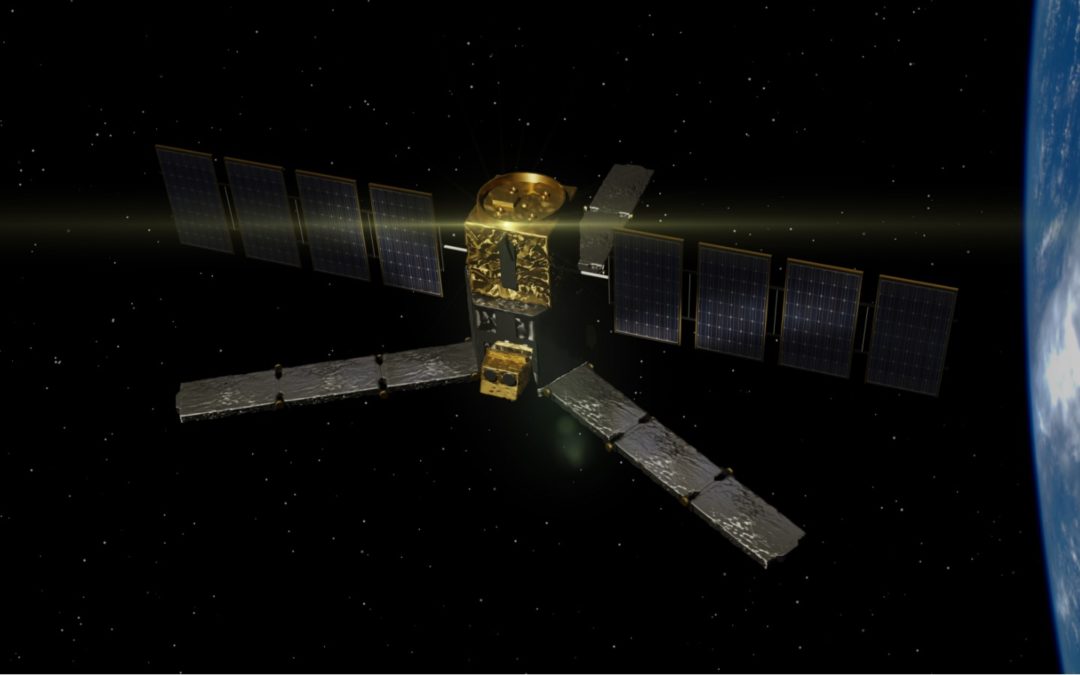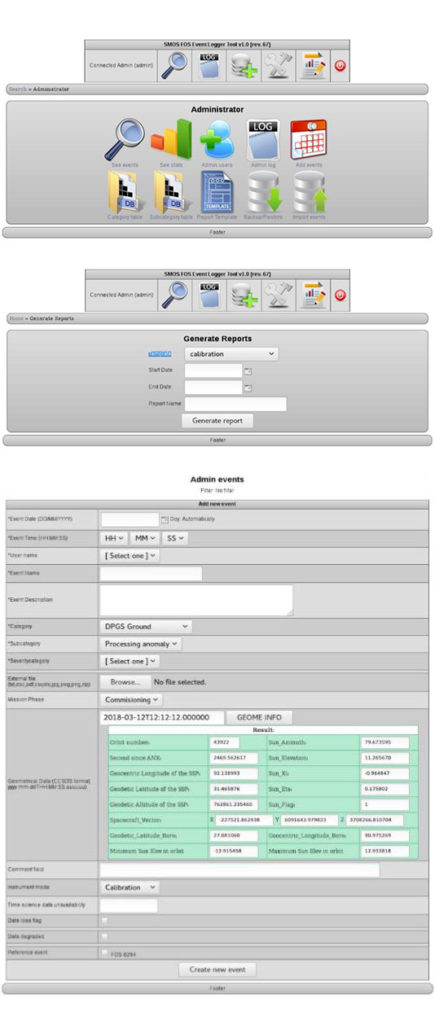We provide an event logger tool for ESAC’s SMOS Satellite DPGS software.
ESA’s Soil Moisture and Ocean Salinity (SMOS) mission is dedicated to making global observations of soil moisture over land and salinity over oceans. Although other applications have recently been found, the main reason for measuring this two physical quantities is to achieve a further understanding of Earth’s water cycle. Moisture is an important aspect of climate and influences plants’ growth and ecosystems’ distribution about Earth. Salinity determines the thermohaline ocean circulation and regulates the CO2 uptake and release, therefore it has a great impact on the carbon and water cycles too. Detailed monitoring of soil moisture and ocean salinity around Earth will provide us with a better understanding of the water cycle and will help us to develop more accurate weather forecasting models. Moreover, SMOS data can be used by farmers all over the world to increase plantations efficiency.
SMOS was launched to a Sun-synchronous, quasi-circular, 758km-high orbit on November 2nd, 2009 by a Rockot rocket from the Plesetsk Cosmodrome in northern Russia together with the tiny satellite Proba-2. Once in orbit, SMOS deployed the three arms of its 8m-diameter Y-shaped main instrument MIRAS. Inspired by the legendary VLA (Very Large Array), MIRAS is a 1.4 GHz (L-band) interferometer consistent of 69 165mm-diameter antennas called LICEFs. These antennas mimic a much bigger antenna that measures soil moisture and ocean salinity by means of small differences in the microwave emissions of soil and water produced by small variations in moisture and salinity respectively.
To operate the satellite and use MIRAS’ observations the data flow must be completed. This starts with CNES’s (French National Centre for Space Studies) Satellite Operations Ground Segment (SOGS) in Toulouse sending the proper commands to successfully operate the satellite. While the satellite is properly functioning it uses its antennas to send telemetry information and MIRAS’s data to ground antennas at ESAC (European Space Astronomy Centre) in Spain and SvalSat (Svalbard Satellite Station) in Norway. This information is gathered up at the Data Processing Ground Segment (DPGS) at ESAC where it’s processed and distributed. Of course, the whole data flow works using 0’s & 1’s binary code, so much additional software and some user interfaces are needed for the SMOS team to operate the satellite, process and interpret the observations’ data and manage the whole SMOS project.
Among many other tasks, the SMOS team is in-charged of logging any event that affects the satellite, which may be: orbit corrections, LICEFs malfunctions, data anomalies, instrument calibrations… For this purpose, we have created an event logger tool, so that it can be added to SMOS’ software and help the team in their job. Besides being fast and reliable, the tool is user-friendly, with visual icons for different functions, a clean display, and an autofill function for basic data.


